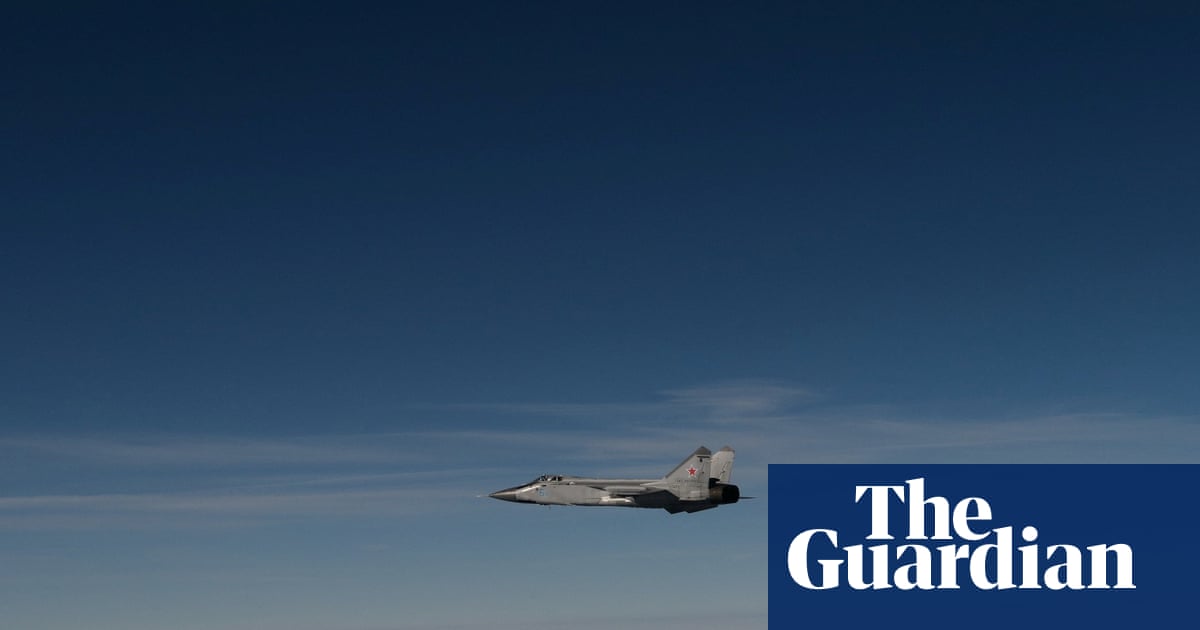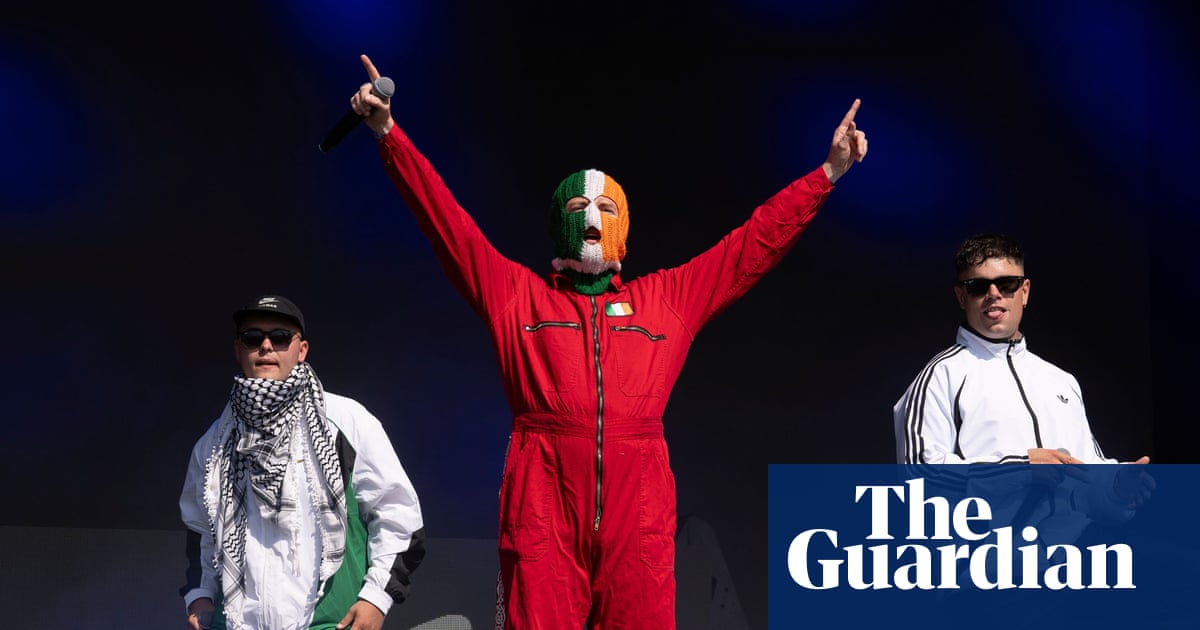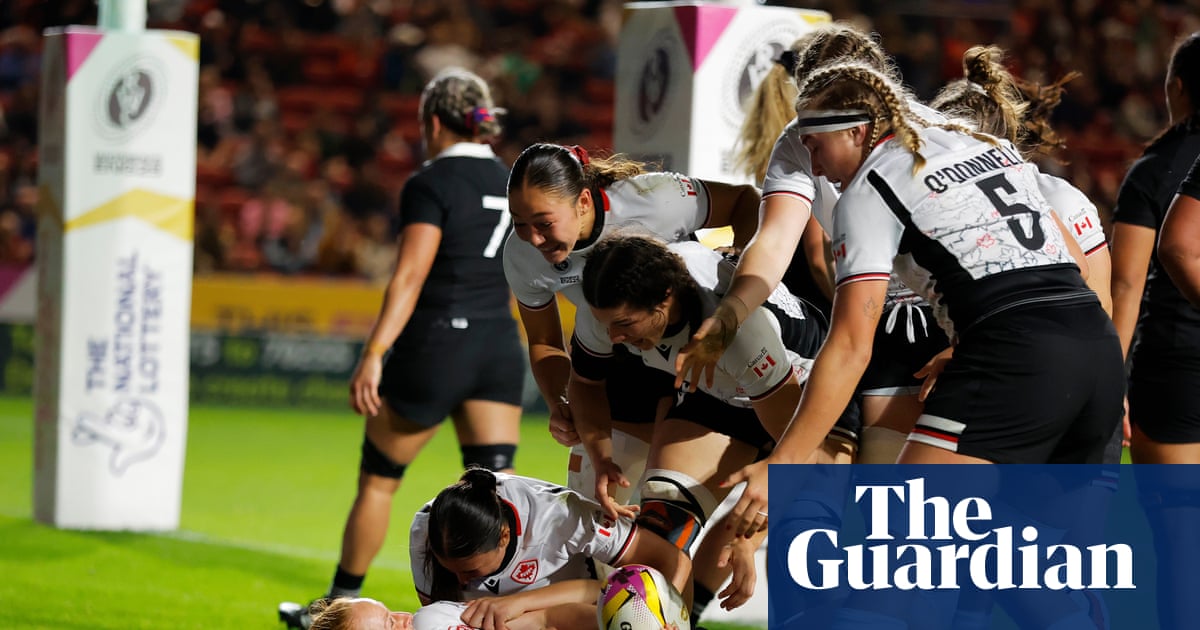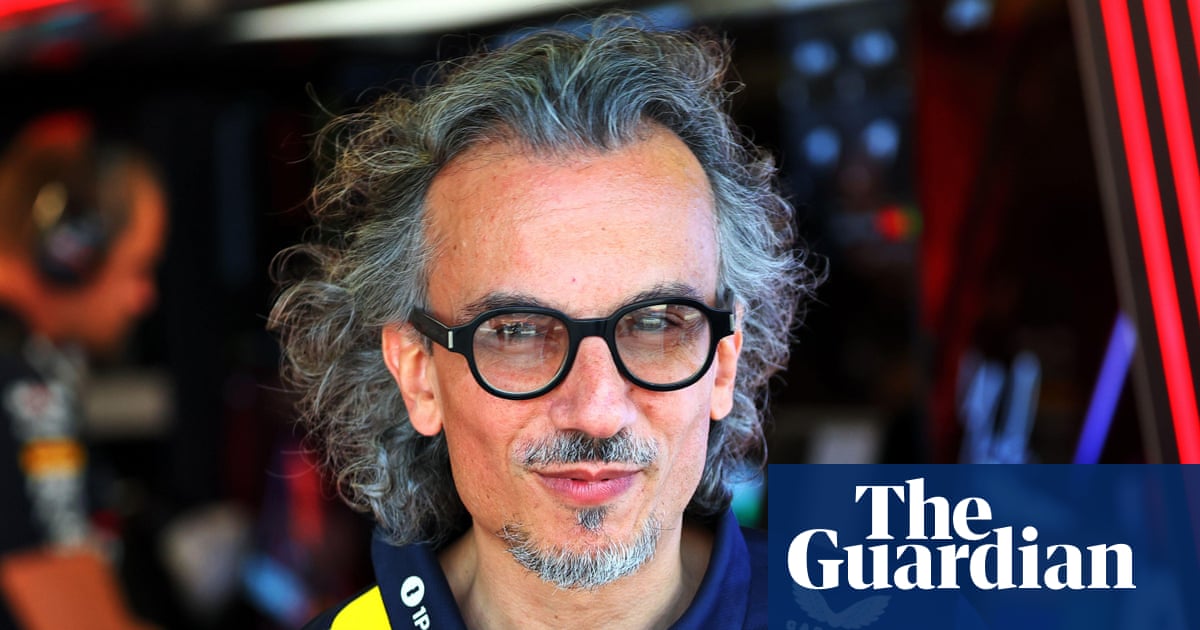PhotoEspaña, Spain’s premier festival of photography, has opened in Madrid and other locations across the country including Barcelona, Santander and Zaragoza. The capital is hosting more than 80 contemporary and historical exhibitions in a range of venues that include the grounds of the Royal Palace, the Prado, a former water tower and an old sawmill.
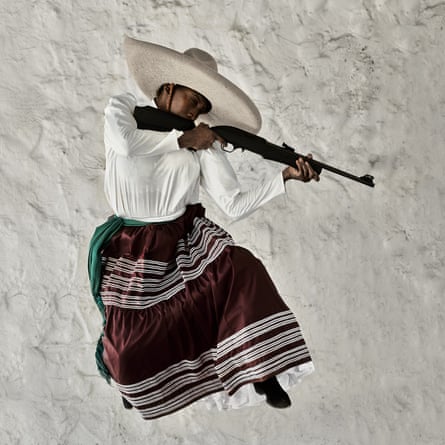


-
Top left: Adelita: She Was Not Only Brave She Was Beautiful, 2023. Top right: Adelita: I Would Follow Her by Ground and Sea, 2023. Above: Toward a History of African American Women on New Spain’s Far Northern Frontier, 2023. Photographs: Ayana V Jackson/Mariane Ibrahim.
Nosce te Ipsum (Know Thyself) at the National Museum of Anthropology showcases the work of the African American photographer and film-maker Ayana V Jackson, whose practice involves the creative use of archival documents and items for her artistic production.
In this, her first exhibition in Europe, the ironic referencing or quoting of existing imagery, for example her re-stagings of portraits of 19th-century Black horsewomen in the series You Forgot to See Me Coming, enable her to imaginatively address the representational legacies of colonialism and the Black diaspora. Her portraits of Adelitas – the name derives from that of Adela Velarde, the famed nurse of the Mexican revolution – engage with the often overlooked activities of African-descendant women during the uprising.
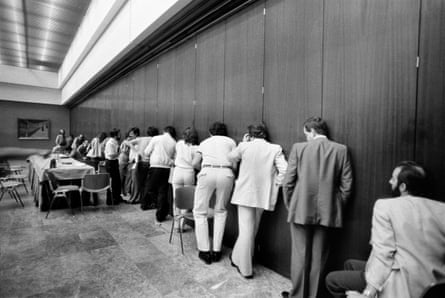
-
Journalists Gathered in Search of Information During a Closed-Door Meeting of the UCD Political Council. Madrid, 1982. Photograph: Marisa Flórez.
Five decades of pictures by the Spanish photojournalist Marisa Flórez are celebrated in the austere confines of Sala Canal de Isabel II. A veteran of the Informaciones and El País newspapers, her work comprises a fascinating chronicle, spanning politics, showbusiness, art and culture, of the initially male-dominated spaces of the post-Franco years.
Flórez was on hand to cover the implementation of the country’s new constitution; she saw the motorcade return to Spain of Pablo Picasso’s exiled Guernica; she covered the terrorist attacks of the Eta years; and she documented the growth in newly permissible street demonstrations. She even photographed Margaret Thatcher opening a Marks & Spencer store.
More broadly, Flórez’s pictures, and indeed her own presence in the newsroom, testified to a cultural shift within the nation. “What happened during this period of time: we had the incorporation of women in every sphere – because women before that were limited to the home,” she said. “There was a mother, a daughter, a wife, and nothing more. Finally, we had not only women in the army, but everywhere else.”
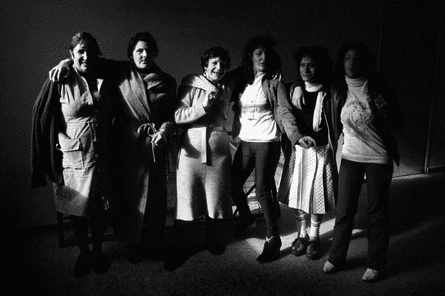
-
Women in Yeserías Prison, Madrid 1981. Photograph: Marisa Flórez.
A survey of landscape photography by the Granada-born artist José Guerrero at Fundación Mapfre reveals his nuanced and studied investigation of the sociopolitical or, more recently, formal possibilities of the genre.
In many of his early series he appears interested in landscapes that might display evidence of change and transition. Elsewhere, he is drawn to iconic territories or spaces, “places that we recognise through other references, pictorial, also photographic, or cinematographic”.
He said: “So I’ve worked in the American US with some references to western movies. I’ve worked in La Mancha, I’ve worked on the River Thames.”

-
House and Pool, Jaén, 2007, from the series Andalucía. Photograph: José Guerrero/VEGAP.
During visits to Mexico in 2017-18, Guerrero took pictures inspired by the architecture of Luis Barragán. In the subsequent BRG series he undertook to recreate aspects of those pictures by photographing his own specially constructed, naturally lit models, thereby introducing to his practice questions of veracity, scale and trompe l’œil.
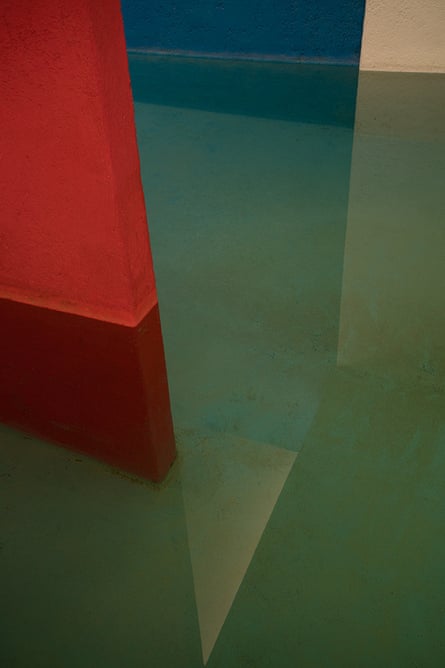

-
Left: Barragán 01, 2018. Right: BRG-067, 2022. Photographs: José Guerrero/VegaP.
In 1966, the American photographer Joel Meyerowitz embarked on a year-long European road trip, visiting 10 countries, travelling 1,900 miles (30,000km) and taking about 25,000 pictures. An expansive exhibition at Fernán Gómez Centro Cultural de la Villa presents the results, with particular reference to the time spent in Spain, especially the six months he stayed in Málaga.

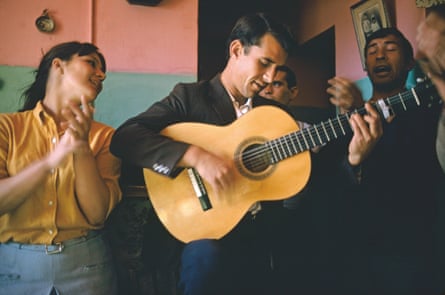

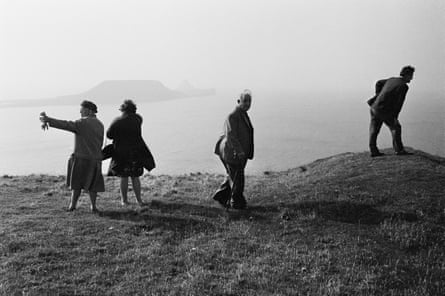
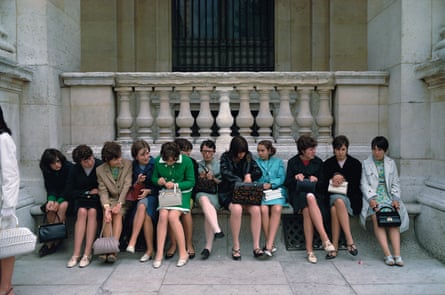
-
Top: Málaga, Spain, 1967. Above, clockwise from top left: Málaga, Spain, 1967; E87, near Trikala, Greece, 1967; Paris, 1967; Wales, 1966. Photographs: Joel Meyerowitz.
Though he was already familiar with the photography of Henri Cartier-Bresson and Robert Frank, and the street pictures of Tony Ray-Jones and Garry Winogrand, Meyerowitz was to credit his European trip as vital to his understanding of the medium and his ability to respond to its demands.
“I saw photography as a chance medium, in which you never know what’s going to happen next, and what’s going to interest you,” he said. “When something totally unexpected reveals itself in front of you, it happens precisely because you are there, ready to recognise it. I think my year in Europe offered me the opportunity to realise how important it is, in photography, to be present.”



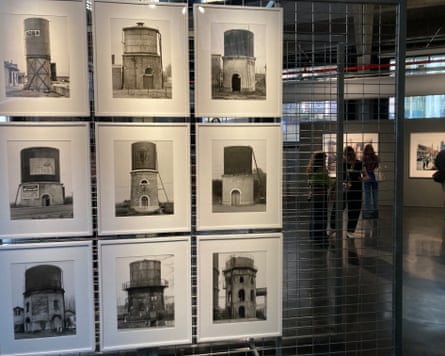
-
Top: Friend of El Friki and Pink Wall. Photograph: Felipe Romero Beltrán. Middle: One Mile of Crosses on the Pavement, 1979. Art action opposite La Moneda Palace, Santiago de Chile, 1979. Photograph: Lotty Rosenfeld Foundation. Above left: Las Horas del Sol by Bleda y Rosa at the Campo del Moro Gardens. Above right: Work by Bernd and Hilla Becher on display at Serrería Belga.
There is much else besides. Bravo, Felipe Romero Beltrán’s study of life, and waiting, at the border between Mexico and the US, employs a compellingly poetic form of documentary. By Pass celebrates the interventions and political activism of Lotty Rosenfeld, a central figure in Chilean video art of the 1980s. Las Horas del Sol (The Hours of the Sun), a project by the duo Bleda y Rosa, is installed with aplomb in the Royal Collections Gallery and Campo del Moro gardens. And a potted overview of German documentary practice, including work by Bernd and Hilla Becher, Thomas Struth, Candida Höfer, Andreas Gursky and Axel Hütte is displayed in the suitably utilitarian Serrería Belga.
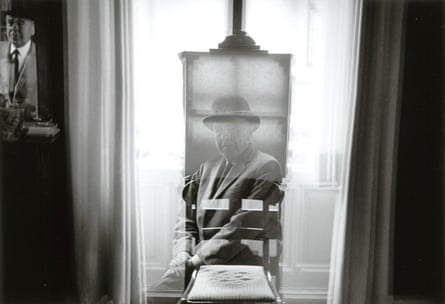
-
Magritte at His Easel, 1965. Photograph: Duane Michals/Admira Milano.
Not least, a retrospective of Duane Michals’ photography attempts to do justice to his commitment to picture the invisible. The titles of his pictures, or more often sequences, give a flavour of his aims: Grandpa Goes to Heaven; The Spirit Leaves the Body; The Young Girl’s Dream; The Bogeyman.
Given his ambitions, it is not altogether surprising that his astute portraits of altogether more visible sitters – Marcel Duchamp, Andy Warhol and René Magritte among them – threaten to steal the show.
Guy Lane travelled as a guest of PhotoEspaña.

 2 months ago
62
2 months ago
62


